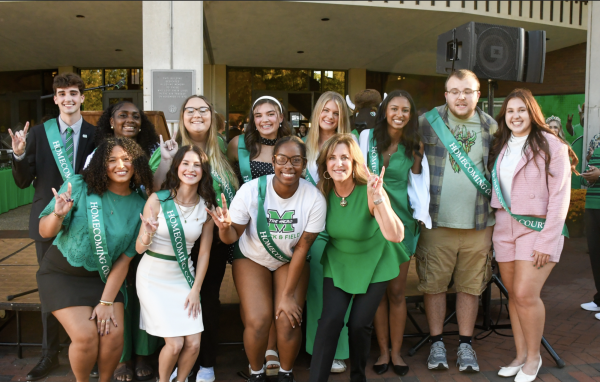Former student discusses symbol of Pan-Africanism
People who are new to black awareness may not understand why African Americans use red, black, and green as their defining colors. The Red, Black, and Green flag is a symbol of Pan-Africanism designed by Marcus Garvey in 1920. It may also be known as the Afro-American flag, the Black Liberation flag or other names. Pan-Africanism is the principle or advocacy of the political union of all the indigenous inhabitants of Africa.
This part of history and meaning is not always taught in the United States. Allison Shaw, a Marshall University student and member of Black United Students said she did not learn about the flag when she was in grade school, but much later.
“I know what the flag represents,” she said. “Unfortunately, it’s something I didn’t learn about in-depth until I was nearly an adult.”
Marcus Garvey was a Jamaican political activist, journalist and entrepreneur. Garvey was the founder and first president-general of the Universal Negro Improvement Association and African Communities League, which is how he declared himself the short-term president of Africa.
Shaw said the colors in the flag each have their own meaning.
“The flag was birthed following the horror that was slavery,” Shaw said. “Red stands for blood, for what the African slaves and our ancestors who fought for our freedom, black is for our people and green is for the wealthy land of Africa.”
Shaw said the flag also represents unity, and she is enjoys seeing it in the Center for African American Students.
“I see it nearly daily now whenever I go to fellowship in the center,” Shaw said. “I feel a sense of pride come over me.”
B.U.S executive BreAnna Vest said black history is significant to her, and she had learned more about black history after taking a class.
“I had taken African American studies in school, and I learned so much about black history, although I was never taught about the Pan-African flag,” Vest said. “I had to do my research outside of class to educate myself about things that I didn’t learn in class.”
Some younger generations do not know the basic meaning of the Pan-African flag, and Vest said she would like to pass her knowledge down to the next generation.
“While still wanting to gather more information and the little knowledge that I already have known about the Pan-African flag,” she said, “I will later on in the future teach my children and grandchildren about this flag.”
Talor Bennett can be contacted at [email protected].
Your donation will help continue the work of independent student journalism at Marshall University. If you benefit from The Parthenon's free content, please consider making a donation.






